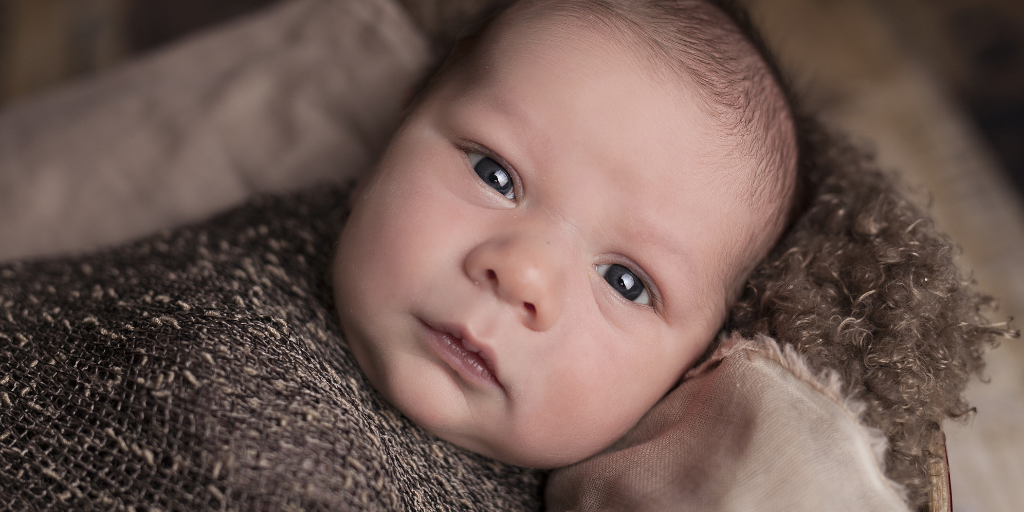
Facing The Day: Why Babies Love Looking At Faces
We often find babies staring intently at our faces - but why? Read on to discover why babies are hard-wired to be fascinated with faces, and how studying facial expressions can help your baby’s development.toddFrom their first hours of life, babies prefer faces - and in particular, their mother’s face. But just why exactly are babies utterly fascinated with faces, and what do facial expressions teach your little one about the big, exciting world around him?
Decades of scientific research shows that faces are of particular importance even to newborn babies. In the first several hours after birth, a baby can recognize her mother’s face and distinguish that face from strangers. A few weeks later, your baby might begin to discriminate between different facial expressions. Over the course of the next several months, your baby can learn to remember and recognize people’s faces. During the first year, infants will learn to mimic facial expressions and decipher meaning based on facial expressions. Clearly, faces are an important factor in infant development.
Here are some fun facts about why babies just love faces!-
Newborns, only several hours old, will often be observed staring at faces.
-
A newborn can focus on your face best from a distance of about an arm’s length.
-
Looking at faces can be a form of social interaction.
-
Babies can recognize faces based on head shape, chin shape, and hair length.
-
As babies grow, they learn to distinguish facial features such as the nose, lips, and eyes of another person.
During the second half of your baby’s first year, faces also play an especially important role in your little one’s development. From about eight months on, your baby will gain vital clues about social situations based on your facial expressions. For example, crawling infants might glance at their mother’s face when confronted with a new surface - such as a slope or a step - before proceeding. Infants might behave similarly when presented with a new toy, or taken to a new location such as a museum or a local park. Babies between six and twelve months of age will often look to their caregiver’s face to determine how to act in certain situations.
Babies seem to prefer certain faces, too.
Studies show that babies prefer to look at faces with open eyes and smiles. Babies also prefer their mother’s face over the faces of strangers. Infants seem to prefer people that make eye contact with them, showing the communicative nature of our facial expressions. If you’ve ever found yourself laughing and chattering playfully with an infant sitting in a shopping cart in line at the supermarket, you now know why - the infant is delighting in one of the only forms of communication they have: eye contact!
Similarly, infants have been observed to become distressed when a caregiver no longer looks them directly in the eyes. In the typical “still-face” experiments, babies became visibly upset and stressed when the caregiver no longer made eye contact and suddenly became unresponsive. Babies need plenty of face-to-face interaction with caregivers to form solid attachment and emotional intelligence.
Faces are important for mimicry and learning to follow someone’s gaze.
A few studies have shown that even newborns can mimic some facial expressions they observe in caregivers (such as sticking out the tongue, or opening the mouth). While the implications still aren’t completely clear, it’s obvious in older infants how important mimicry is to the learning experience! If a baby sees another baby cry, he might also begin to cry. If a baby sees someone yawn, she might also yawn and begin to act sleepy. If a baby sees his mother happy and excited about a new toy on the ground, the baby might also crawl over to the toy and begin playing with it.
Babies also eventually learn to follow someone’s gaze, making it easier to decipher how to act or respond in certain situations. Infants six months and older can learn to figure out someone’s intentions or learn to predict actions based on what the person is gazing at. Gaze-following can give babies important insight into what is going through a person’s mind. By the time a baby reaches one year of age, he will be able to skillfully follow a person’s gaze to figure out what that person is looking at - and maybe even guess what that person will do next based on what, and how, he is looking at the object!
If you find your baby completely fascinated with faces, don’t worry - your little one is just using facial cues to learn about the curious world around him! Help your baby learn about emotions by playing a game of making different facial expressions, and seeing if your baby imitates you! You can also make a habit of trying to make good eye contact when you interact with your baby. Faces give a lot of clues about the world!
Do remember to follow us on Instagram @keababies and join our loving and supportive KeaBabies Love Group!
Parenting is awesome. Sleep is overrated. Every day is an adventure.
|
|
Meet Our KeaMommy Contributor: Kaitlyn Torrez I’m Kaitlyn Torrez, from the San Francisco Bay Area. I live with my husband and two children, Roman and Logan. I’m a former preschool teacher, currently enjoying being a stay at home mom. I love all things writing, coffee, and chocolate. In my free time, I enjoy reading, blogging, and working out. |


























































